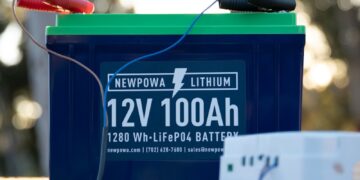Powering the Digital Future: How Data Centers Leverage Fuel Cells, Solar, Natural Gas, Wind, Cogeneration, and Utilities for Sustainability
April 07, 2025 | By [Your Name] | EcoBusinessNews.com
The rise of artificial intelligence (AI), cloud computing, and the ever-expanding digital economy has propelled data centers into the spotlight as some of the most energy-intensive facilities in the modern world. These sprawling hubs of computational power, often dubbed the “backbone of the internet,” process and store vast amounts of data, requiring a constant and reliable supply of electricity. As their energy demands soar—projected to double by 2030 according to the International Energy Agency (IEA)—the challenge of powering them sustainably has become a critical focus for businesses, policymakers, and environmentalists alike. In this detailed exploration, we’ll dive into how data centers are turning to innovative energy solutions like fuel cells, solar power, natural gas, wind energy, and cogeneration, while forging partnerships with utilities to balance reliability, cost, and environmental impact.
The Energy Appetite of Data Centers: A Growing Challenge
Data centers are insatiable energy consumers. A single hyperscale data center can use anywhere from 100 to 1,000 megawatts (MW) of power—enough to power hundreds of thousands of homes. Globally, data centers accounted for approximately 1-2% of total electricity consumption in 2022, a figure that’s expected to climb as AI workloads and digital services proliferate. This immense energy demand stems not only from the servers and IT equipment but also from the cooling systems required to prevent overheating, which can account for up to 40% of a facility’s total energy use.
The environmental implications are staggering. Historically, many data centers have relied on fossil fuel-heavy grids, contributing significantly to greenhouse gas (GHG) emissions. In 2019, their carbon footprint rivaled that of the aviation industry, according to Environment America. As tech giants like Google, Microsoft, and Amazon pledge net-zero goals, the race is on to decarbonize these facilities while ensuring uninterrupted operation—a tall order given the intermittency of renewable energy and the limitations of aging grid infrastructure.
Fuel Cells: A Reliable, Cleaner Alternative
One promising solution gaining traction in the data center industry is the use of fuel cells. These electrochemical devices convert fuels like natural gas, biogas, or hydrogen into electricity without combustion, offering a cleaner and more efficient alternative to traditional generators. Companies like Bloom Energy have led the charge, deploying solid oxide fuel cells (SOFCs) that provide a steady power supply with reduced emissions.
In November 2024, American Electric Power (AEP) signed a landmark deal with Bloom Energy to supply up to 1 gigawatt (GW) of SOFC capacity over several years, starting with an initial 100 MW deployment in 2025. Described as the largest commercial utility deal for fuel cells to date by Utility Dive, this partnership aims to support data centers in central Ohio, a burgeoning hub for hyperscale facilities. The fuel cells, which initially run on natural gas, eliminate smog-forming particulates and cut carbon emissions by up to 50% compared to grid power in some regions, according to Bloom Energy.
Fuel cells shine in their ability to deliver “time-to-power” solutions. With grid connection delays and gas turbine delivery times stretching years, fuel cells can be deployed quickly as supplemental or microgrid power sources. For instance, Amazon Web Services (AWS) has utilized SOFCs at data center sites in Oregon, where local utilities couldn’t expand capacity fast enough to meet demand. This flexibility makes fuel cells a bridge technology as the world transitions to fully renewable systems.
However, challenges remain. While cleaner than diesel generators, natural gas-powered fuel cells still emit carbon dioxide, conflicting with net-zero ambitions. The long-term goal for many operators is to shift to green hydrogen—produced via electrolysis using renewable energy—as a fuel source, though current production costs and infrastructure limitations make this a future prospect rather than an immediate reality.
Solar Power: Harnessing the Sun for Data Centers
Solar energy is a cornerstone of the renewable energy revolution, and data centers are increasingly tapping into its potential. Solar photovoltaic (PV) systems offer a zero-emission power source, and their declining costs—down over 80% since 2010 according to the U.S. Department of Energy—make them an attractive option for large-scale energy users.
Tech giants are leading the way. In 2022, Amazon secured a 450 MW solar power purchase agreement (PPA) with AES Corporation in California, a deal that also included 225 MW of battery storage to address solar’s intermittency. Similarly, Microsoft signed a 230 MW solar and wind PPA with Repsol in Spain, part of a broader trend that saw Spain emerge as Europe’s largest market for data center PPAs in 2024, totaling 4.7 GW, per Data Center Dynamics.
Solar’s appeal lies in its scalability and ability to co-locate with data centers, reducing transmission losses. In Australia, projects are underway to power facilities entirely with solar, while in the U.S., companies like Sunrun are exploring bespoke solar systems tailored to data center needs. CEO Mary Powell noted at the 2024 Dervos conference that such systems could partner with utilities to optimize energy delivery, a model that could redefine how data centers integrate renewables.
Yet, solar power isn’t without hurdles. Its reliance on daylight hours necessitates robust energy storage or backup systems, driving up costs. Land use is another concern—large solar farms can compete with agriculture or conservation efforts, sparking debates over resource allocation.
Natural Gas: A Controversial but Necessary Bridge
Despite the push for renewables, natural gas remains a significant player in the data center energy mix. Its reliability and abundance—especially in the U.S., where production has soared—make it a go-to option for meeting surging demand. S&P Global projects that natural gas demand from data centers could reach 3-6 billion cubic feet per day (bcf/d) by 2030, driven by new gas-fired power plants dedicated to hyperscale facilities.
In December 2024, Entergy agreed to power a 1 million square foot Meta data center in Louisiana with three combined-cycle natural gas turbines totaling 2,260 MW. Meanwhile, ExxonMobil committed to building a 1.5 GW gas plant exclusively for data centers. These projects highlight natural gas’s role as a “bridge fuel,” providing baseload power while renewable capacity catches up.
Critics, however, decry its environmental impact. Though less carbon-intensive than coal, natural gas still emits significant GHGs, undermining climate goals. Data centers opting for behind-the-meter gas agreements—where power is generated on-site—face scrutiny for locking in fossil fuel reliance at a time when decarbonization is urgent.
Wind Energy: A Steady Breeze of Sustainability
Wind power complements solar as a renewable energy staple for data centers. With turbines generating 8.4% of U.S. electricity in 2020 per IS Partners, wind offers a cost-effective, low-emission option. Its consistency in certain regions—think coastal areas or the Great Plains—makes it a viable baseload source when paired with storage or hybrid systems.
Google, a pioneer in renewable procurement, has matched its energy use with green electricity since 2017, relying heavily on wind PPAs. In Virginia, Dominion Energy is developing a 2,600 MW offshore wind farm—the largest in U.S. waters—to serve data centers in Northern Virginia, a region processing nearly 70% of global digital traffic, according to the Washington Post.
Wind’s challenges mirror solar’s: intermittency and land use. Offshore wind, while promising, faces regulatory and logistical hurdles, as seen with stalled projects in the Eastern U.S. Still, its potential to power data centers sustainably keeps it in the mix.
Cogeneration: Maximizing Efficiency
Cogeneration, or combined heat and power (CHP), is an underutilized gem for data centers. By generating electricity and capturing waste heat for cooling or heating, CHP systems boost efficiency to 80-90%, compared to 30-40% for traditional power plants. This dual-output approach is ideal for data centers, where cooling demands are relentless.
A 2012 study on ResearchGate showcased a fuel cell-based CHP system powering a data center and an adjacent office building, using heat recovery to meet cooling needs via absorption chillers. More recently, Hitachi Energy has advocated for hydrogen fuel cell CHP systems, which could provide clean, dispatchable power and support grid stability—a vision for the “data center of the future.”
Cogeneration’s benefits are clear: lower fuel use, reduced emissions, and cost savings. Yet, its adoption lags due to high upfront costs and the need for tailored engineering, limiting its scale in the industry.
Working with Utilities: A Collaborative Approach
Data centers don’t operate in isolation—they rely on utilities to deliver power and manage grid interactions. As demand spikes, utilities face pressure to expand capacity while meeting renewable mandates. Collaborations like AEP’s fuel cell deal with Bloom Energy or Sunrun’s utility-partnered solar models illustrate how joint efforts can address these challenges.
In Texas, where data centers and crypto mines strain the grid, Environment Texas suggests mandating on-site renewables or microgrids—small, independent power systems—to ease utility burdens. PJM Interconnection’s $5.2 billion plan to build power lines from coal plants to Virginia data centers, reported by the Washington Post, underscores the tension between short-term reliability and long-term sustainability.
Utilities are also exploring innovative tariffs and demand-response programs to incentivize efficiency. By aligning data center growth with grid modernization, these partnerships can pave the way for a cleaner energy future.
The Road Ahead: Balancing Innovation and Impact
The energy landscape for data centers is a complex tapestry of trade-offs and opportunities. Fuel cells offer reliability with a cleaner footprint, solar and wind provide renewable promise, natural gas ensures stability, and cogeneration maximizes efficiency—all while utilities play a pivotal role in integration. Yet, no single solution is a silver bullet. The intermittency of renewables, the emissions of fossil fuels, and the costs of emerging technologies like hydrogen fuel cells demand a multifaceted approach.
As AI and digital transformation accelerate, data centers must innovate relentlessly. Early adopters of hybrid systems—pairing solar and wind with fuel cells or batteries—may set the standard. Government incentives, like those boosting hydrogen production, and private investments will further shape the trajectory. The stakes are high: powering the digital future sustainably could redefine how we view energy, technology, and the environment.
What’s your take? How should data centers balance growth with green goals? Share your thoughts below, and stay tuned to EcoBusinessNews.com for more insights on the intersection of business and sustainability.



















